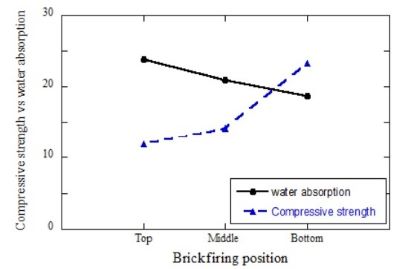The Effect of Firing Position in a Furnace on Mechanical Properties of Bricks in Lubuk Alung District, Padang Pariaman
DOI:
https://doi.org/10.24036/cived.v10i3.486Keywords:
Bricks, Furnace, Mechanical properties, Compressive strength, Water absorptionAbstract
Brick is one of the materials used in building house walls. The demand for red bricks in construction and business growth in the property sector is increasing. Lubuk Alung District, precisely in Jorong, Kampung Ladang, is one of the West Sumatra areas producing conventional bricks. The process of firing brick in this sub-district is still carried out using a conventional furnace, using wood as an energy source. The quality of the red bricks produced is different due to the different positions of the bricks in the kiln. This research aims to determine whether the red bricks produced in Jorong Kampung Ladang, Lubuk Alung District, meet the quality classification of red bricks according to SNI 15-2094-2000. From the results, the bricks in the upper, middle, and lower firing positions meet the quality requirements for the physical properties of red bricks. However, red bricks in the upper, middle, and lower firing positions do not meet the SNI 15-2094-2000 quality standards regarding dimensions or sizes. Meanwhile, the results of mechanical properties testing for specific gravity and compressive strength showed that none of the test object samples met the standards required according to SNI 15-2094-2000.
Downloads
References
SNI-15-2094-2000. (2000). SNI-15-2094-2000 Bata Merah Pejal Untuk Pasangan Dinding.
Burhanudin. (2013). Studi Penyimpangan Ukuran Batu Bata Merah. 7 Nomor 2, 231–236.
Suwardono. (2002). Mengenal pembuatan bata, genteng, dan genteng bergelasir. Jurnal Inersia, 7 NO 1 Apr.
Djamas, D., & Ramli. (2011). Pengaruh Proporsi Material Limbah Serat Alami Terhadap Sifat Fisika Bata Merah. Eksakta, 1, 56–63.
Prayuda Hakas, Setyawan Endra Aji, S. F. (2018). Analisis Sifat Fisik Dan Mekanik Batu Bata Merah Di Yogyakarta. Jurnal Riset Rekayasa Sipil, 1(2), 94–104.
Bowles, J. E. (1991). Sifat-Sifat Fisis dan Geoteknis Tanah: Mekanika Tanah Edisi ke dua. Erlangga.
Elianora, Shalahuddin, M., & Aljirzaid. (2012). Variasi Tanah Lempung, Tanah Lanau Dan Pasir Sebagai Bahan Campuran Batu Bata. Jurnal Teknobiologi, 1(2), 34–46.
Nur. (2008). Analisa Sifat Fisis dan Mekanis Batu Bata Berdasarkan Sumber lokasi dan Posisi Batu Bata Dalam Proses Pembakaran. Jurnal Rekayasa Sipil, 4(2).

Downloads
Published
How to Cite
Issue
Section
License
Copyright (c) 2023 Nevy Sandra, Nilda Tri Putri, Prima Yane Putri, Fajri Yusmar

This work is licensed under a Creative Commons Attribution 4.0 International License.







2.jpg)
